
Jim Capobianco co-wrote Pixar’s Ratatouille, earning him an Oscar nomination. He then directed follow-up short Your Friend the Rat, which won him an Annie Award. Now, after years at that animation studio and working on other projects including Mary Poppins Returns, Capobianco has made a stop-motion animated feature about the life of Leonardo Da Vinci. The funny, sincere and moving The Inventor opens in select theaters this Friday September 15th. (This Animation Scoop Q&A was edited for length and clarity. Photo Credits: Curiosity Studio.)
Jackson Murphy: I love everything that your movie says and does. Congratulations on it.
Jim Capobianco: Thank you, man.
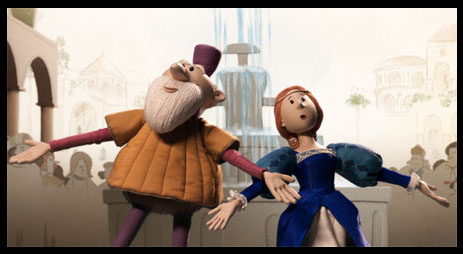
JM: As I was watching “The Inventor”, I could tell how much you love animation, storytelling and the cinematic experience. What thrills you about all three of those things?
JC: To me animation is the ultimate art form because it combines most arts. Drawing… and especially in stop-motion you have sculpture and the mechanics of building these great puppets. And you have filmmaking techniques. Dancing and music and movement. That’s what I love about animation. It gives you the landscape to put in a cinematic feel. I grew-up on 2D animation. Obviously I went into animation to draw 2D and tell those types of stories. CG animation comes in while I’m in school. It starts popping in. I was like, “Okay. There’s this other form. Nah, it’s not gonna take over.” And eventually it does. (laughs)
But I was storyboarding so I transitioned to keep boarding. And with some of the films I’ve done, I’ve been able to keep doing what I’ve loved: 2D animation and now eventually. I never thought I would do a stop-motion film, but I love it. I adore all this moviemaking and these aspects.
JM: There are so many layers to this story. In doing research about Leonardo da Vinci, did you feel the emotions and the weight and the wow-factor that we get out of many sequences in “The Inventor”?
JC: I’m trying to capture an idea of Leonardo. So one thing I really wanted to do is bring him down to a human level so we could connect to him as a character. If he’s just depicted as a genius or the wise sage or the wacky wizard, it’s harder to connect to that character. Because he’s the lead I really needed to make him approachable to everyone and bring that humanity in. But of course if it’s about Leonardo da Vinci, you want to tap into the inventions and the scope of his mind. It’s finding out ways to bring that in and… to present them in a sense that’s amazing but still keeps that humanity in there. It was all tied into the research of him and bringing to life in a way that’s caricatured in animation but also grounded in reality.
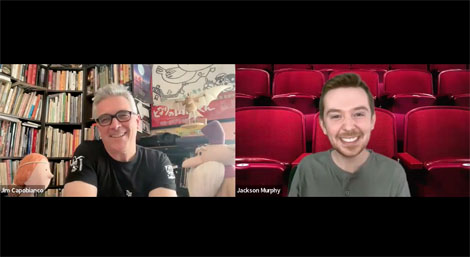
JM: There are neat and cool sequences involving the [five] senses. So fascinating. And da Vinci wants to be remembered for more than just being an artist. In working with Stephen Fry, one of the most brilliant comedic/dramatic actors and awards show hosts of all-time…
JC: (laughs)
JM: I love when he’s hosted the BAFTAs. In working with him on this voice performance, how did both of you want to convey da Vinci as a guy yearning to be appreciated for more?
JC: As artists, we’re all pushing for that all the time. And as people, we want to be appreciated. Stephen definitely tapped into that idea of humanity of Leonardo. Casting Stephen was perfect because is a polymath. He’s interested in so many different things. He does so many different things. You know he’s also hosting the British “Jeopardy!” now.
JM: That’s right! Yeah.
JC: He is so smart, and it comes out in his voice. You hear his intelligence in his voice, and that’s what I wanted. I wanted someone with wit, humor and intelligence. And it didn’t have this deep, Ian McKellen, Gandalf-type voice, or what you might think a guy with a beard would have. I really wanted him to have this lighter voice and humor in his voice. Stephen was the perfect person I could think of for that. And his view of life and everything is the same as Leo.
I actually saw an interview with him where he was talking about religion, his sexuality and all these different things. He kept switching between topics and I was like, “Oh my God. He sounds like Leonardo da Vinci if you were interviewing him.” Perfect. And Daisy Ridley as Marguerite.
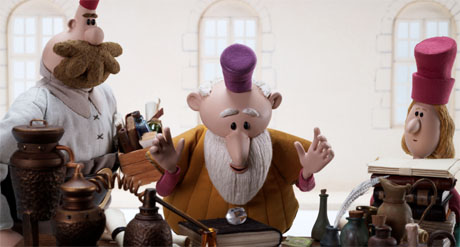
JM: Fantastic.
JC: A great person to work with. Great voice as well. Power in her voice. And she actually sings — beautiful voice.
JM: The songs are so good. And now when Stephen Fry hosts “Jeopardy!” and he has to do answers and questions about da Vinci, he will have added context now after making this movie!
JC: (laughs) Yeah. I hope he gives a wink to “The Inventor”. That would be great.
JM: The timing of the comedy is so smart. Same in “Ratatouille”. How do you know when to incorporate comedy, like the gravediggers. How do you know when it feels right?
JC: I guess it’s just instinctual. I’m not going, “Okay, every five minutes I have to have a joke” or anything like that. To me it’s coming out of the characters. What in this moment from this situation is kind of odd and funny? I would pitch the story as “Monty Python and the Holy Grail” meets “Amadeus”. That’s kind of how I looked at the film. I love “Monty Python”. I would always look for a zany way to get into some kind of characterization.
The gravediggers is a nice example. Originally they were written as two dudes philosophizing about life. And in casting it, I cast my friend John Gilkey, who was a clown for Cirque du Soleil and is now an improvisation artist. His wife Jane [Osborn] does some voice work and is funny too. Jane was like, “Well what can I do?” And I was like, “Maybe I can turn the gravediggers into this couple.” This is their job. It made it more poignant. They improved them doing the little dance.
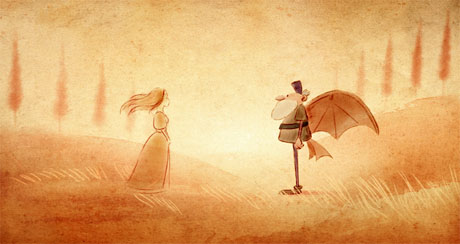
JM: Oh, that was improved! Wow.
JC: As a director you have to be open to other people’s inputs into the film and be willing to accept these gifts, to incorporate them into the storytelling. A lot of that came from working with John, Jane, Max Baumgarten and Natalie Palamides. They’re also improv artists who voice Il Boccador and [Pierre] Nepveu, the architect and engineer, who also brought a lot of humor into their acting.
JM: Nice. A lot of this movie is about collaborating with others, sharing ideas, passions, allowing some to get and understand you. That’s Marguerite with da Vinci. She gets what he wants to do. Doesn’t it feel good when somebody gets you and understands you and understands your vision?
JC: (laughs) Of course! Yes, it’s true! Oh yeah. To make this film it’s the only way. You have to communicate well to the team. My co-director Pierre-Luc Granjon… I looked at his films to inspire me for this movie. And then I met him and he became my co-director.
JM: Wow.
JC: Which I never thought would happen. It’s as if I used Kubrick as an inspiration point and then somebody said, “Hey, he can be your co-director.” And I went, “What?!” [Me and Granjon] have this great bond because we have the same sensibility. It’s that understanding of each other. And as a director, it’s about allowing people into the space and not being protective of it and knowing everything. I had never done stop-motion before, so I needed a team around me who understood the process. And I needed to be humble about it. “I don’t know everything. I need you guys to tell me what to do and where the difficulties lie.”
JM: Then I’m sure a lot of planning went into the stop-motion and the hand-drawn… and the beautiful way you marry the two in certain sequences, which I’m sure could not have been easy.
JC: Yeah. You’re right. So much planning went into everything. For stop-motion in general you have to do a ton of planning because you need to know how these characters will move to build the armatures. And the 2D as well. One thing we really benefited from was doing everything at one location. We did it at Foliascope Studios in France. We had 2D and stop-motion in the same space so we could communicate together and the 2D team could be brought on set to go, “Okay here’s where the stop-motion will be for you to connect to. What if we move the camera a little bit? What if we were out farther?” They could then say, “This will be easier for us if you position it this way.” That way we could work together as a team. If we had to do it remotely, I think it would’ve been a lot more difficult. So it made it more economical (got it in on-time and on-budget) and enjoyable.
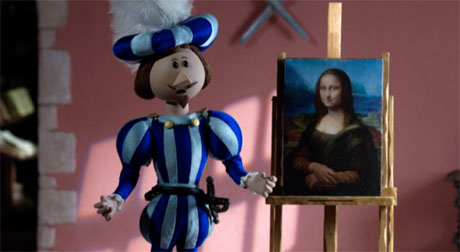
JM: There are a couple things you have in common with Tom Hanks. One of them is that you have both worked for Pixar. And the second thing is that you can look at the Mona Lisa in interesting ways… (through “The Da Vinci Code”)…
JC: Oh right. (laughs)
JM: So, when you look at the Mona Lisa now after your experience working on this movie… and you use it in the movie… what does it make you feel? What does the Mona Lisa give you now when you look at it?
JC: That’s interesting. I don’t know. I always think of it as a painting. (laughs)
JM: (laughs) Even after all this, it’s just still a painting. An amazing painting. But a painting.
JC: In the movie it became a sort of cypher for what Leonardo had not completed yet or he felt he hadn’t completed and it’s a projection into [that]. Mona Lisa is connected to Marguerite and the women in the film. There are actually poses in the stop-motion where they hit the Mona Lisa pose. We’re sort of putting this projection of her throughout the movie. But as far as my view of the painting, I’ve seen it only once for real. And it’s tiny. Tinier than you would think. It’s mysterious. It has a mystery to it. You know our version of it in the film is actually more accurate to the original Mona Lisa. We had it repainted. We brought the colors up from what it is now because it’s very faded and old now.
- INTERVIEW: Strap In For “Mars Express” - April 30, 2024
- INTERVIEW: Jeff Fowler On “Knuckles” And “Sonic 3” - April 22, 2024
- INTERVIEW: “Inside Out 2” Director And Producer On Pixar Sequel - April 16, 2024


 September 11th, 2023
September 11th, 2023  Jackson Murphy
Jackson Murphy  Posted in
Posted in 






